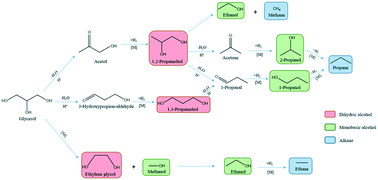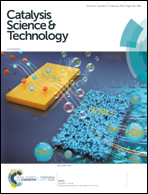The route towards sustainable production of ethylene glycol from a renewable resource, biodiesel waste: a review
Abstract
Ethylene glycol (EG) is a commodity chemical commercially produced via oxidation of the petrochemical-based resource, ethylene. It has direct usage in antifreeze applications besides being an intermediate product of the downstream production line of plastics such as polyethylene terephthalate (PET). EG can also be produced via a sustainable route utilizing a renewable bio-resource called glycerol, a waste from the biodiesel industry. Hydrogenolysis of this biomolecule with the aid of heterogeneous catalysis causes selective C–O and C–C cleavages which result in the production of EG. This review covers the i) mechanisms of EG production, ii) homogeneous catalysis and iii) heterogeneous catalysis in EG production, performed in both batch and continuous flow reactor systems. The role of transition metal and noble metal catalysts in glycerol conversion and selectivity towards EG is critically analysed in this paper. In addition to that, the reaction conditions such as pH, temperature, and pressure as well as the reactor type that favours EG production are also discussed in detail. On weighing the advantages of heterogeneous catalysis in the sustainable production of EG, various techniques have been proposed to improve the efficiency and feasibility of the current methods.



 Please wait while we load your content...
Please wait while we load your content...